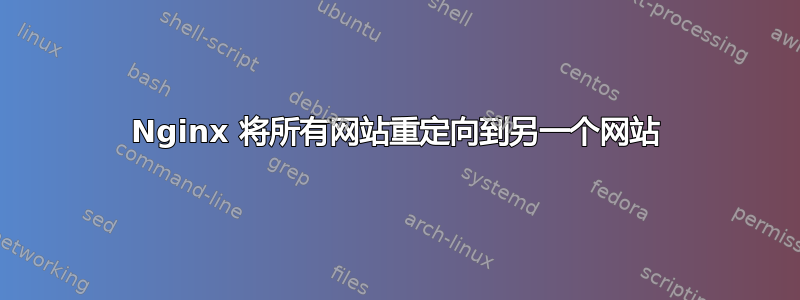
我遇到了一些奇怪的问题。我的服务器上安装了 2 个 WordPress 网站。我将它们称为
example1.com, example2.com
所有 2 个网站均在 Nginx、PHP-7.2、MariaDB 和 Ubuntu 18.04 上运行。
example1.com运行良好。这是我安装的第一个网站。当我安装第二个网站时,它example2.com运行良好,直到安装完成。然而,过了一会儿,它开始向我显示一个空白的主页。所有标题都正常,只是网站空白。
当我输入时,example2.com/wp-admin它会将我重定向到example1.com/wp-admin。所有网站都可以在 中运行https。
这是我的nginx.conf。
user tharindu;
worker_processes 2;
pid /run/nginx.pid;
include /etc/nginx/modules-enabled/*.conf;
events {
worker_connections 2048;
multi_accept on;
use epoll;
}
http {
##
# Basic Settings
##
sendfile on;
tcp_nopush on;
tcp_nodelay on;
keepalive_timeout 10;
types_hash_max_size 2048;
server_tokens off;
client_max_body_size 64m;
# server_names_hash_bucket_size 64;
# server_name_in_redirect off;
include /etc/nginx/mime.types;
default_type application/octet-stream;
##
# SSL Settings
##
ssl_protocols TLSv1 TLSv1.1 TLSv1.2; # Dropping SSLv3, ref: POODLE
ssl_prefer_server_ciphers on;
ssl_ciphers "ECDHE-ECDSA-CHACHA20-POLY1305:ECDHE-RSA-CHACHA20-POLY1305:ECDHE-ECDSA-AES128-GCM-SHA256:ECDHE-RSA-AES128-GCM-SHA256:ECDHE-ECDSA-AES256-GCM-SHA384:ECDHE-RSA-AES256-GCM-SHA384:DHE-RSA-AES128-GCM-SHA256:DHE-RSA-AES256-GCM-SHA384:ECDHE-ECDSA-AES128-SHA256:ECDHE-RSA-AES128-SHA256:ECDHE-ECDSA-AES128-SHA:ECDHE-RSA-AES256-SHA384:ECDHE-RSA-AES128-SHA:ECDHE-ECDSA-AES256-SHA384:ECDHE-ECDSA-AES256-SHA:ECDHE-RSA-AES256-SHA:DHE-RSA-AES128-SHA256:DHE-RSA-AES128-SHA:DHE-RSA-AES256-SHA256:DHE-RSA-AES256-SHA:ECDHE-ECDSA-DES-CBC3-SHA:ECDHE-RSA-DES-CBC3-SHA:EDH-RSA-DES-CBC3-SHA:AES128-GCM-SHA256:AES256-GCM-SHA384:AES128-SHA256:AES256-SHA256:AES128-SHA:AES256-SHA:DES-CBC3-SHA:!DSS";
ssl_session_cache shared:SSL:20m;
ssl_session_timeout 10m;
add_header Strict-Transport-Security "max-age=31536000; includeSubDomains" always;
##
# Logging Settings
##
access_log /var/log/nginx/access.log;
error_log /var/log/nginx/error.log;
##
# Gzip Settings
##
gzip on;
gzip_vary on;
gzip_proxied any;
gzip_comp_level 3;
# gzip_buffers 16 8k;
# gzip_http_version 1.1;
gzip_types text/plain text/css application/json application/javascript text/xml application/xml application/xml+rss text/javascript;
##
# Security
##
add_header X-Frame-Options "SAMEORIGIN" always;
add_header X-Content-Type-Options "nosniff" always;
add_header X-Xss-Protection "1; mode=block" always;
add_header Content-Security-Policy "default-src 'self' https: data: 'unsafe-inline' 'unsafe-eval';" always;
##
# Cache Settings
##
fastcgi_cache_key "$scheme$request_method$host$request_uri";
fastcgi_cache_use_stale error timeout invalid_header http_500;
fastcgi_ignore_headers Cache-Control Expires Set-Cookie;
add_header X-FastCGI-Cache $upstream_cache_status;
##
# Virtual Host Configs
##
include /etc/nginx/conf.d/*.conf;
include /etc/nginx/sites-enabled/*;
server {
listen 80 default_server;
listen [::]:80 default_server;
server_name _;
return 444;
}
}
这是我的服务器块example1.com
fastcgi_cache_path /var/run/nginx-cache levels=1:2 keys_zone=EXAMPLE1:100m inactive=60m;
fastcgi_cache_key "$scheme$request_method$host$request_uri";
server {
listen 443 ssl http2;
listen [::]:443 ssl http2;
server_name www.example1.com;
ssl_certificate /etc/letsencrypt/live/example1.com/fullchain.pem;
ssl_certificate_key /etc/letsencrypt/live/example1.com/privkey.pem;
access_log /var/www/example1.com/logs/access.log;
error_log /var/www/example1.com/logs/error.log;
root /var/www/example1.com/public_html;
index index.php;
include global/cache-rules.conf;
location / {
try_files $uri $uri/ /index.php?$args;
}
location ~ \.php$ {
include snippets/fastcgi-php.conf;
fastcgi_pass unix:/var/run/php/php7.2-fpm.sock;
fastcgi_param SCRIPT_FILENAME $document_root$fastcgi_script_name;
fastcgi_cache_bypass $no_cache;
fastcgi_no_cache $no_cache;
fastcgi_cache EXAMPLE1;
fastcgi_cache_valid 200 60m;
}
location ~* \.(js|css|png|jpg|jpeg|gif|ico)$ {
expires max;
log_not_found off;
}
}
server {
listen 80;
listen [::]:80;
server_name example1.com www.example1.com;
ssl_certificate /etc/letsencrypt/live/example1.com/fullchain.pem;
ssl_certificate_key /etc/letsencrypt/live/example1.com/privkey.pem;
return 301 https://www.example1.com$request_uri;
}
这是我的服务器块example2.com
fastcgi_cache_path /var/www/example2.com/cache levels=1:2 keys_zone=EXAMPLE2:100m inactive=60m;
fastcgi_cache_key "$scheme$request_method$host$request_uri";
server {
listen 443 ssl http2;
listen [::]:443 ssl http2;
server_name www.example2.com;
ssl_certificate /etc/letsencrypt/live/example2.com/fullchain.pem;
ssl_certificate_key /etc/letsencrypt/live/example2.com/privkey.pem;
access_log /var/www/example2.com/logs/access.log;
error_log /var/www/example2.com/logs/error.log;
root /var/www/example2.com/public_html;
index index.php;
include global/cache-rules.conf;
location / {
try_files $uri $uri/ /index.php?$args;
}
location ~ \.php$ {
include snippets/fastcgi-php.conf;
fastcgi_pass unix:/var/run/php/php7.2-fpm.sock;
fastcgi_param SCRIPT_FILENAME $document_root$fastcgi_script_name;
fastcgi_cache_bypass $no_cache;
fastcgi_no_cache $no_cache;
fastcgi_cache EXAMPLE2;
fastcgi_cache_valid 200 60m;
}
location ~* \.(js|css|png|jpg|jpeg|gif|ico)$ {
expires max;
log_not_found off;
}
}
server {
listen 80;
listen [::]:80;
server_name example2.com www.example2.com;
ssl_certificate /etc/letsencrypt/live/example2.com/fullchain.pem;
ssl_certificate_key /etc/letsencrypt/live/example2.com/privkey.pem;
return 301 https://www.example2.com$request_uri;
}
我已经使用这些配置将所有版本的 URL 重定向到https://www。
我怎样才能不再看到这些空白页并同时停止重定向?
答案1
- 确保第二个 WordPress 网站上的 URL 设置正确。(example2.com)
- 创建一个简单的 phpinfo 页面以
/var/www/example2.com/public_html确保 NGINX 将请求路由到正确的路径example2.com。 - 检查访问日志
example2.com以确保所有请求均由此虚拟主机提供服务。 创建一个简单的 PHP 信息页面,以确保
example2.com此虚拟主机满足所有 PHP 请求。
完成这些步骤后,你就会发现问题出在哪里。


